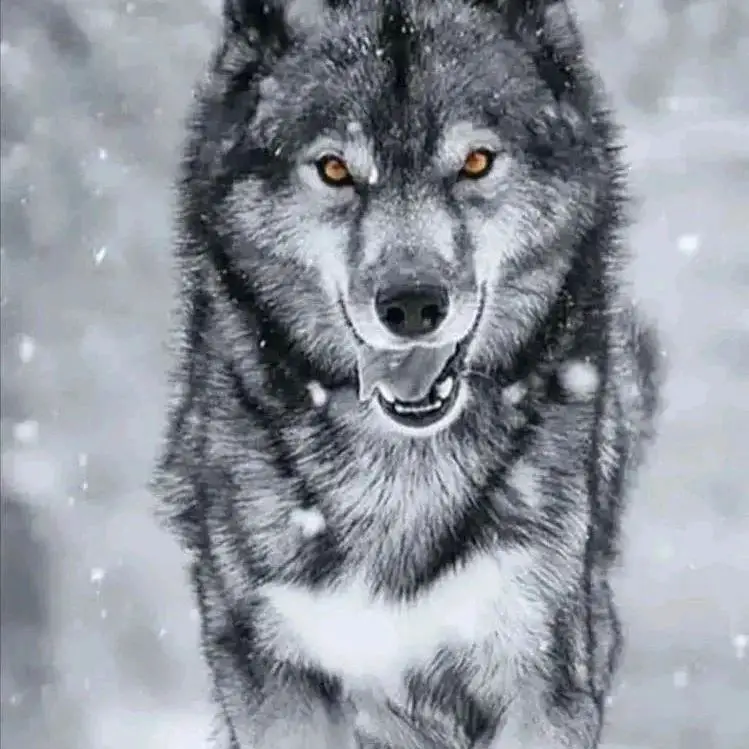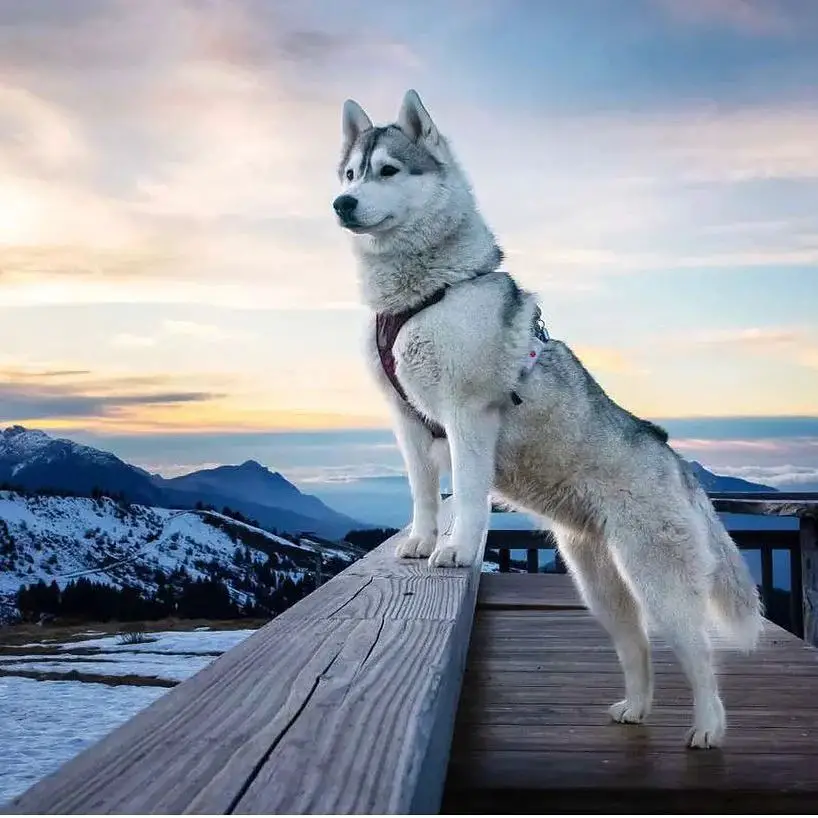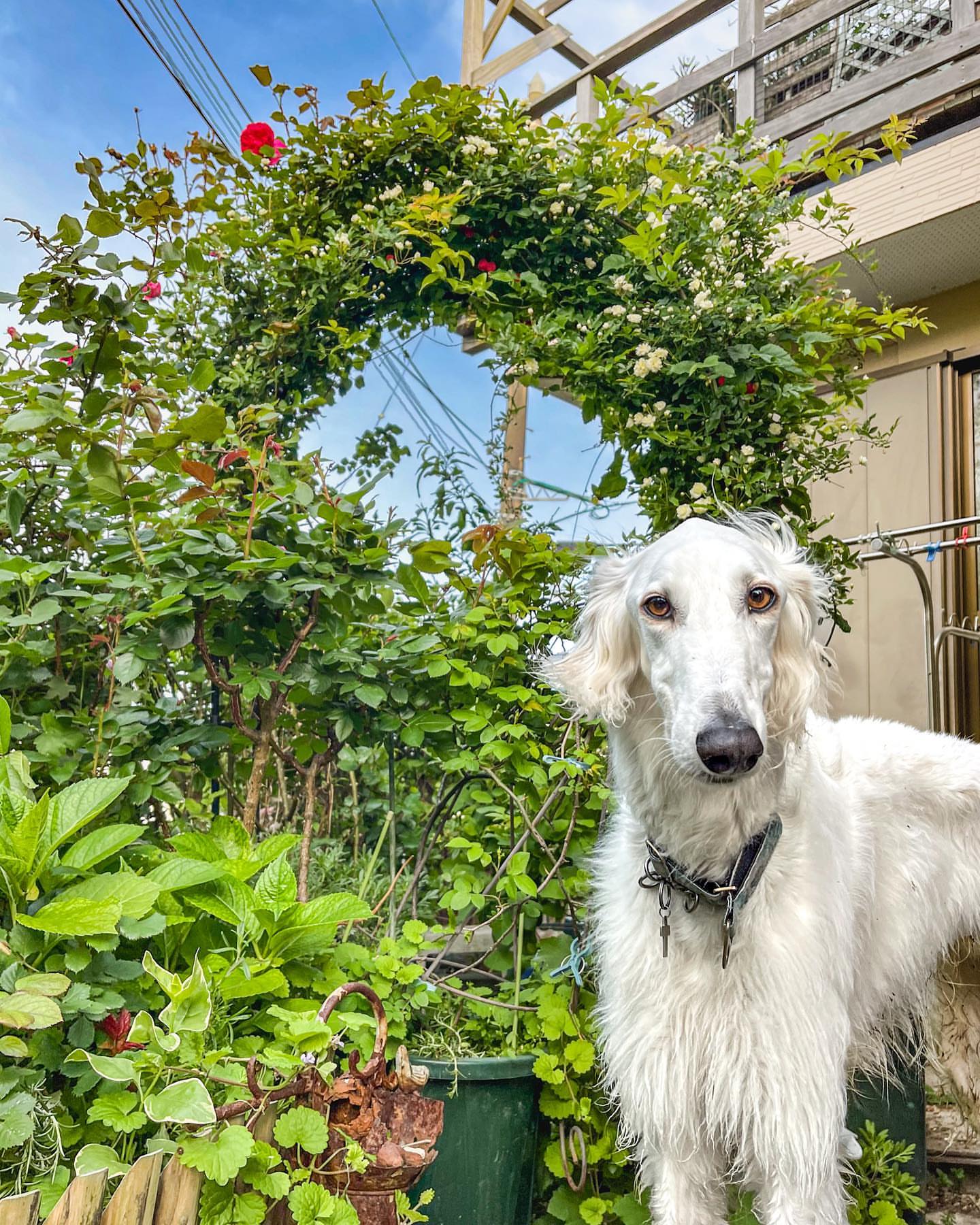Dogs come in all shapes and sizes and—with some more than others—it’s easy to forget where they descended from. Between 27,000 and 40,000 years ago, the dog as we know it today evolved from prehistoric wolves. It is estimated that dogs first became domesticated around 15,000 years ago. Dogs are a separate breed from wolves but share a similar genetic blueprint. Both dogs and wolves belong to the canine family, although both are completely different from each other. While one is man’s best friend, the other is a dangerous species and top predator in the ecosystem.

What makes some dog breeds close to wolves?
The main reason why dog breeds are close to wolves is their genetics. Dogs are a distant relative of wolves and this can be seen by research done on these two animals.
Dr. Robert K. Wayne is a canid biologist and molecular geneticist who states that modern dogs only differ from grey wolves by 0.2% of their DNA.
This is an incredibly small difference considering that coyotes are often considered the wolf’s closest relatives and also have a 4% difference between their DNA.
This means that dogs are 20 times closer to wolves than coyotes are in regards to their genetics. Some dogs are closer to wolves than others due to cross-breeding making them look and act so different from one another.
Also read: How close is a husky to a wolf?
Closest dog to a wolf
Samoyed
While this breed is much smaller than a wolf, they could still be considered similar-looking to wolves. They have short and pointed ears with long snouts. Samoyeds are still used in Russia for pulling sleds and herding reindeer. This dog also has similar genetics to wolves.
Lhasa Apso
Lhasa Apsos are used as watchdogs for Buddist monasteries in Tibet, where the breed originates from. This dog is very small and fluffy. Despite this, their DNA is very similar to that of a wolf.
Shar-Pei
The distinctive Shar-Pei is another ancient Chinese breed with its origins in the south of China. Believe it or not, their genetic makeup is very similar to that of ancestral wolves. Shar-Pei have a history of being used as guard dogs and even guarded the royal palaces in ancient China.
Perhaps their history as guardians accounts for the fierce loyalty Shar-Pei are famed for today. Archeologists found monuments resembling Shar-Pei that date back to around 200BC.

Siberian Husky
This northern dog breed originated from Siberia where it is and has been used for pulling sleds. The Siberian Husky resembles a wolf both in looks and genetics. It’s worth noting that the Siberian Wolf is different from the Siberian Husky, although many people get these confused.
You can read about Are huskies part of the wolf family?
Akita
Researchers found that Japan’s Akita Inu is one of the breeds most genetically close to ancient wolves. The dignified and regal Akita is an ancient Japanese dog breed of many talents. As well as being excellent hunters, they’re also often trained as police dogs and make wonderful family dogs.
Akitas are much loved in Japan and are considered something of a national treasure. The celebrated author Helen Keller brought the first Akita to the United States. Her Akita, “Kamikaze-go”, had been gifted to her by the Japanese government when she visited the country and expressed a fondness for the breed.
Basenji
The Basenji bears a slight resemblance to its wolf ancestors and is a hunting dog from Africa. It has pointed ears, a long snout, and similar tendencies to the grey wolf. This dog is also genetically similar to the wolf, and you can see a few similarities between their faces.
Shih Tzu
The first six dogs on this list probably didn’t come as too much of a surprise. The Shih Tzu is a breed more likely to raise an eyebrow, but the truth is that this breed is highly genetically similar to wolves. Shih Tzus originated in Tibet and were long favored by Chinese emperors as pets.
More likely to be found on their owner’s lap than working, chasing, or hunting like the Shiba Inu or Basenji, the Shiz Tzu is a popular family pet today. Don’t let their small size fool you, though. The Shih Tzu is a vocal breed with a big personality. They also can’t get enough of digging, so keep an eye on your garden if a Shih Tzu is about!

Shiba Inu
This breed is a small Japanese dog, but you can see a small resemblance to wolves. They hunt rabbits and birds, also giving them a similar personality to wolves. Plus, their DNA is also similar. While it may be small, the Shiba Inu is very similar to its wolf ancestors.
Alaskan Malamute
Similar to the Husky, this breed is perhaps the closest to wolves in regards to their looks. This is partly due to the fact that their genetic make-up is still incredibly similar to their wolf ancestors. Luckily, the Alaskan Malamute doesn’t share its ancestor’s unfriendliness. These dogs are said to make excellent family and companion dogs due to their playful, affectionate disposition.
Afghan Hound
As the name suggests, the Afghan Hound has its origins in the mountains of Afghanistan. The Afghan Hound is one of the oldest dog breeds and is another one of the “basal breeds” along with the Chow Chow, Shiba Inu, and others on this list.
This breed is a little like a dog world supermodel—tall, with a long shiny coat and long, slender face, Afghan Hounds turn heads wherever they go. Though they certainly don’t look like wolves, their genes are remarkably similar.
You may like: Akita Inu Wolf Mix
Tibetan Terrier
The Tibetan Terrier was bred as both a watchdog for Tibetan monasteries and also as a companion dog. Tiny but strongly genetically tied to wolves, the Tibetan Terrier is built for life in the snowy mountains. Their flat feet stood them in good stead when navigating the Tibetan mountains. This breed is energetic, playful, and smart. Tibetan Terriers do better with owners that provide them with plenty of mental stimulation and exercise.

Saluki
The Saluki is also known as the “Persian Greyhound”. While not quite as strongly genetically close to wolves, the Saluki still has a stronger connection than many breeds. The breed originates from the Fertile Crescent in the Middle East.
Elegant, slender, and calm, Salukis are naturally shy and need a patient owner. They’re also not considered the easiest breed to train, being very independent and strong-minded despite their timid nature. This breed does best when socialized as early as possible.
Conclusion
Though all dogs descend from wolves, some breeds are more closely linked to ancient wolves than others. While some retain more obvious “wolfish” physical features like the Akita and Alaskan Malamute, others look nothing like their ancestors. There are many dogs that are similar to their wolf ancestors, both in their looks and appearance. With the breeds that look like wolves, it’s not difficult to believe that their DNA is still very similar.




